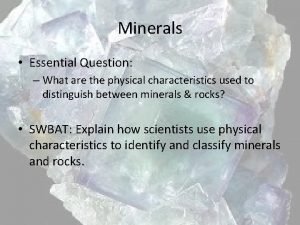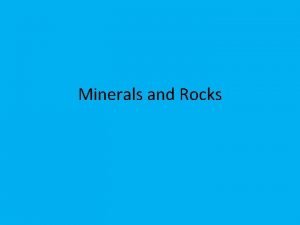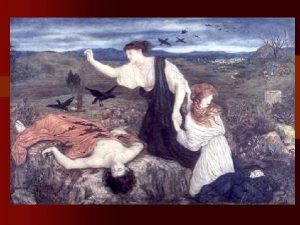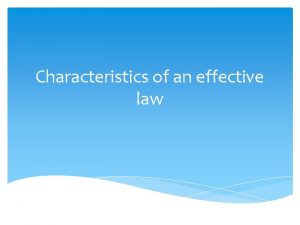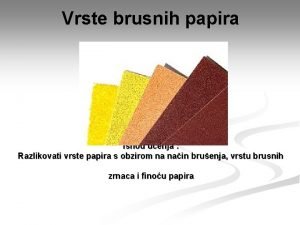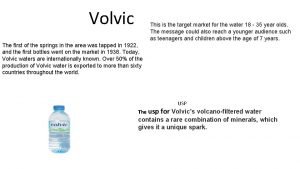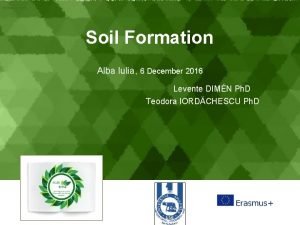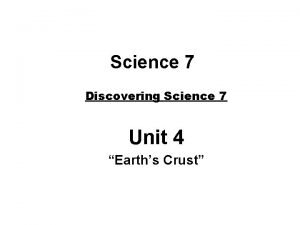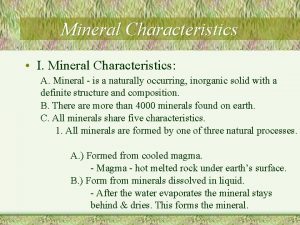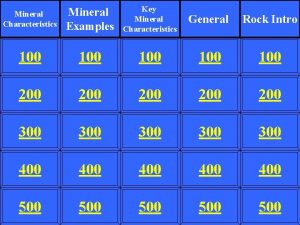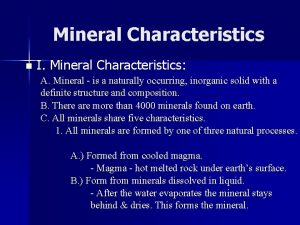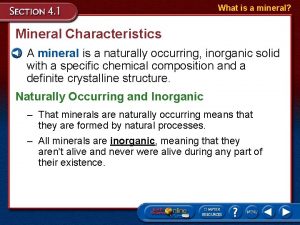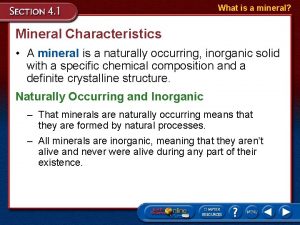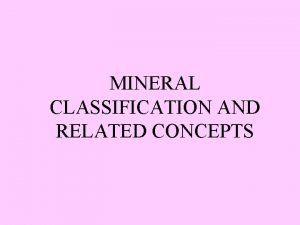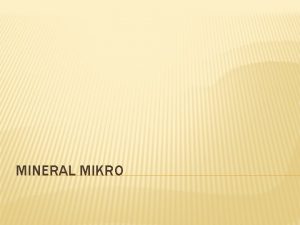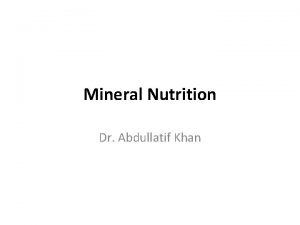Five Characteristics of a Mineral 1 A mineral











- Slides: 11


Five Characteristics of a Mineral 1. A mineral is naturally occurring (formed naturally rather than manufactured). 2. It is a solid. 3. A mineral has a definite chemical composition, with slight variations. 4. It is inorganic. 5. It has a characteristic crystalline solid (a specific orderly, repeating arrangement of atoms, ions, or molecules).

5 Mineral Properties: Crystal Form Crystal form—crystal shape—is the outward expression of a mineral's internal arrangement of atoms. – Internal atomic arrangement is determined by atom (or ion) charge, size, and packing. – The conditions in which the crystal grows also affect crystal form. • Temperature, pressure, space for growth – Well-formed minerals are rare in nature—most minerals grow in cramped, confined spaces.

5 Mineral Properties: Hardness • Hardness is the resistance of a mineral to scratching. • Hardness is dependent on the strength of a mineral's chemical bonds. – The stronger the bonds, the harder the mineral.

5 Mineral Properties: Cleavage and Fracture Cleavage is the property of a mineral to break along planes of weakness. calcite • Planes of weakness are determined by crystal structure and bond strength. – Minerals break along planes where the bond strength is weakest. • Fracture occurs in minerals where the bond strength is generally the same in all directions. – Minerals that fracture do not exhibit cleavage. quartz

5 Mineral Properties: Color • Color is an obvious feature of many minerals, but it is not reliable for mineral identification. – Very slight variations in composition or minor impurities can change a mineral's color. • Color results from the interaction of light waves with the mineral.

Color Cont. © 2013 Pearson Education, Inc.

5 Properties of Minerals: More Color-Related Characteristics (Streak and Luster) • Streak is the color of a mineral in its powdered form. – Powder is produced by rubbing against an unglazed porcelain plate—a streak plate. – Mineral color may vary, but streak color is generally constant. • Luster describes the way a mineral's surface reflects light. There are two types of luster— metallic and nonmetallic.

Specific Gravity • Specific gravity is the ratio of the weight of a substance to the weight of an equal volume of water. • In simple terms, it is how heavy a mineral feels for its size (volume) • Displacement method

Specific Gravity Mass / Volume

Magnetism
 Mineral streak
Mineral streak Special minerals
Special minerals And now with gleams of half-extinguished thought
And now with gleams of half-extinguished thought One in five challenge
One in five challenge 5 senses and 5 elements
5 senses and 5 elements Macbeth act five scene one
Macbeth act five scene one Aristotle's criteria for a tragic hero
Aristotle's criteria for a tragic hero The characteristics of an effective law
The characteristics of an effective law Brusni papir za vodeno brušenje
Brusni papir za vodeno brušenje Target mineral water
Target mineral water Mineral vs organic soil
Mineral vs organic soil Rock vs mineral
Rock vs mineral
